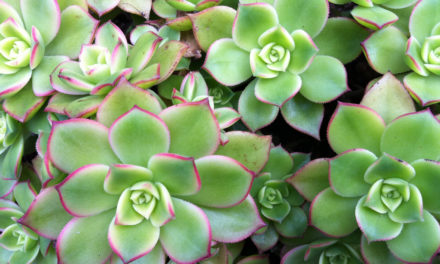Quaking or trembling aspen is a short-lived (50 years), fast-growing, medium-sized tree. It seldom exceeds 60 feet in height and 20 inches in diameter. Although it has some good ornamental characteristics, including trembling leaves, light-colored bark and its adaptation to a wide variety of sites, its root sprouting habit discourages widespread use for shade or ornamental planting. Aspen trees can be a supermarket for insects and diseases. Some of the challenges are listed here with references to more detailed control.
1. Ailments affecting leaves
Aphids are small insects that feed by sucking plant sap from leaves and excrete a sweet, sticky substance called honeydew. The damage is mostly unsightly but may kill the branches they feed on in the long-term. Contact insecticides and soaps are useful when aphids are exposed on leaves.
Aspen are susceptible to leaf spot caused by fungi that develop readily in wet, cool weather. This can decrease a tree’s aesthetic value and cause premature defoliation. Severe outbreaks can affect tree growth, cause premature defoliation or die-back of parts of the tree, and reduce its defense capabilities. Some fungi that cause leaf spots are Marssonina, Septoria and Ciborinia. A timely application of fungicide can prevent severe outbreaks of leaf spot.
2. Ailments affecting trunks
The aspen borer is a wood-boring beetle that lays eggs on the bark of aspen trees. The beetle larvae bore into the wood, weakening it and easing the start of fungal infections. This is best controlled by maintaining vigorous tree health or use of chemicals while eggs are being laid.
Aspen cankers do not always kill trees but might slow development. These cankers (wounds) are caused by a fungal infection, most commonly Cytospera. To manage the disease, reduce stress on trees, use resistant plants, remove infected limbs, clean wounds and prune properly.
Oystershell scale develops on the bark of many common trees and shrubs and can cause serious injury during outbreaks. Oystershell eggs typically hatch in late May or early June, and the active “crawlers” that emerge move about to find new sites to feed. Sprays applied when the crawlers are present can be very effective in controlling oystershell scale.
3. Keeping your aspen healthy
It is important to maintain a proper watering schedule for aspen, as they suffer from over- or under-watering. Unwanted aspen sprouts that appear in the lawn may be mowed, but do NOT spray the sprouts, as they are connected to the mother tree. Other preventive measures: Avoid wounding the main trunk with mowers or weed whacker, trim out cankers that are less than half the circumference of the aspen, and clean up heavy scale-insect infestations.

 Aspen trees in the Rocky Mountain National Park during the fall. Photo Credit: DaveAlan (iStock).
Aspen trees in the Rocky Mountain National Park during the fall. Photo Credit: DaveAlan (iStock). 



Comment on: Here’s What’s Killing Your Aspens